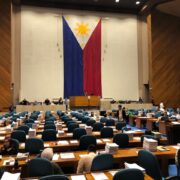Broken flood-control record

Horrific floods in Texas in the United States have killed at least 121 people over the July Fourth holiday, including young girls at a summer camp along the precarious banks of a river, with many others still missing. In New Mexico, also in the US, at least three people died from a flash flood in a mountainside community. In Tokyo, the Japanese capital known for its modern infrastructure and efficient disaster management, record-breaking heavy rains submerged roads and prompted authorities to issue evacuation orders.
These are all familiar scenes to Filipinos who have seen and experienced much worse, not only during super typhoons but even from an otherwise regular rainfall. The southwest monsoon (“habagat”) season has brought heavy rains and floods to many areas in Luzon, particularly densely-populated Metro Manila. The Office of Civil Defense has also issued a warning to remain vigilant as more rains—and with them, floods—are expected during the season.
But what these floods also prove is that much still needs to be done in mitigating the impact of heavy rains, despite them being a regular occurrence. The national and local governments, apparently, have not fully abandoned their reactive stance, only springing into action when the problem has already wreaked havoc on lives and communities.
Extreme urbanization
In an advisory issued on July 3, the Department of Environment and Natural Resources’ Mines and Geosciences Bureau (MGB) said more than 600 barangays across Luzon were at risk of landslides and floods. Of this number, 412 were in Metro Manila, where MGB said the rains “are not readily absorbed by the ground” due to extreme urbanization. “This leads to increased surface runoff that overwhelms drainage systems and causes flooding in low-lying areas as well as those near waterways,” it added.
This is what happened earlier this week in some areas in the south of Metro Manila, where floodwaters were waist-deep making several roads unpassable. Residents had to wade through the floods to get home, while motorists were trapped in their cars for hours due to the traffic that stretched for kilometers from the Alabang, Muntinlupa and Parañaque tollgates. A one-year-old baby also drowned during evacuation in Las Piñas.
MGB urged local government units (LGUs) to activate preemptive safety measures based on their area’s susceptibility, including deploying disaster response teams, clearing waterways, monitoring river levels, and enforcing evacuation protocols in high-risk zones.
Biggest irony
These reminders every time the rainy season comes sound like a broken record. Almost exactly a year ago, Supertyphoon “Carina” hit and severely flooded Metro Manila. President Marcos, inspecting the aftermath, attributed the floods to climate change and trash that clogged waterways. The biggest irony was that the massive floods happened only two days after his State of the Nation Address, where he reported that more than 5,500 flood-control projects have already been completed under his administration. The reality on the ground showed an extremely different picture, however.
It turned out that the country lacks an integrated flood control master plan and that those flood-control projects the President bragged about were “stand-alone” measures meant to provide immediate relief to vulnerable areas. In addition, the P351-billion master plan approved under President Benigno Aquino III’s administration in 2012 was only 30 percent complete. Since last year’s flood crisis, nothing much has been heard about its progress.
If an integrated plan is already in place, LGUs need not be routinely reminded to clear the waterways and drainage systems. A master plan should not only focus on flood control, such as cleaning the waterways and building dams or infrastructure to reduce the risks of landslides or soil erosion.
Unmitigated urban development
It must also include a good zoning strategy where building codes are in place to restrict development in areas prone to flooding. These areas should instead be designated as open spaces, wetlands, or parks to allow for natural water absorption instead of trapping the floods within them.
The recent floods have demonstrated the effects of unmitigated urban development, and all the government needs to do is pay attention and heed the warning of experts.
The reclamation projects in Manila Bay are a perfect example of how the government appears adamant on sacrificing the environment for “development.” Studies have found that these projects could cause not only the loss of fishing grounds but also massive flooding in the metropolis because they will change the natural flow of water currents in the bay.
Unless the government puts a rein on urbanization and vetoes flood control projects in the national budget like what Mr. Marcos did this year, these floods will no longer be seasonal and will only get worse as climate change intensifies. And when that happens, it will be at the expense of the poor and vulnerable.





















The smarter energy path for Filipinos